Videos and the visualization of influx behaviour
Each video shows the motion-corrected film on the left side and the fitted version on the right side.
It was found that the main information per pixel can be described by only four parameters.
Three of these four parameters were visualized in the color image representation — representing the influx behaviour information. Warm colors (red, orange, yellow) indicate
that the flooding early/fast was, cold colors (turquoise, blue) that it was late/slow, colorless from a time-average influx behaviour.
On this page, the colors in the images are normalized in each case to its own averaged influx behaviour, so the colors visualize for time differences within the means of recording.
The recordings were made with 4 frames/second.
Times are displayed in frames, a frame corresponds to each corresponding to a 1/4 second.
If you click on one of the pictures, you get each for an enlarged view of the picture.
Control participant
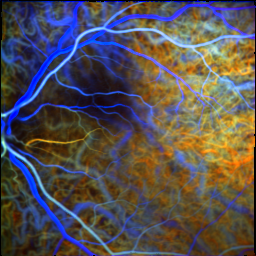 |
time of the maximum: 26.5 f ± 19.6%visual acuity: 1.00
video
|
Patient with age-related macular degeneration, dry form
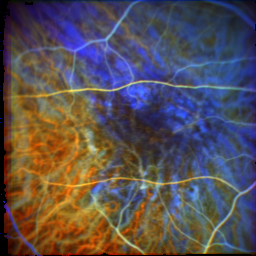 |
time of the maximum: 50.4 f ± 14.3%visual acuity: 0.30
video
|
Responder
| before the first rheopheresis |
after the first rheopheresis |
after the third rheopheresis |
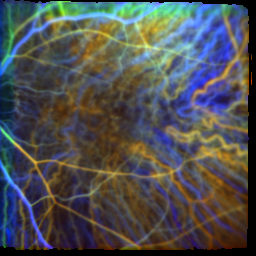 |
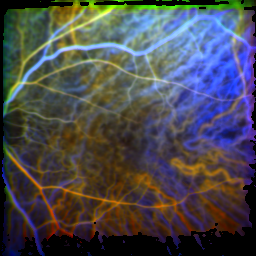 |
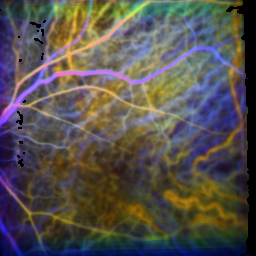 |
| time of the maximum: 55.4 f ± 10.1%visual acuity: 0.50
video
|
time of the maximum: 53.3 f ± 14.5%visual acuity: 0.63
video
|
time of the maximum: 34.7 f ± 13.8%visual acuity: 0.80
video
|
Non-responder
Unfortunately, some shots were stopped before the maximum was reached.
Therefore, it is hardly possible to evaluate them.
| before the first rheopheresis |
after the first rheopheresis |
before the third rheopheresis |
after the third rheopheresis |
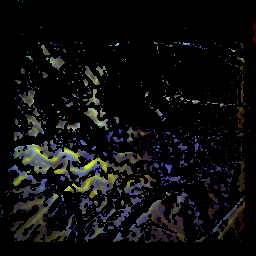 |
 |
 |
 |
| time of the maximum: 93.6 f ± 17.3%visual acuity: 0.25
video
|
time of the maximum: 74.1 f ± 14.5%visual acuity: –
video
|
time of the maximum: 52.4 f ± 10.1%visual acuity: 0.32
video
|
time of the maximum: 66.4 f ± 8.6%visual acuity: 0.20
video
|










